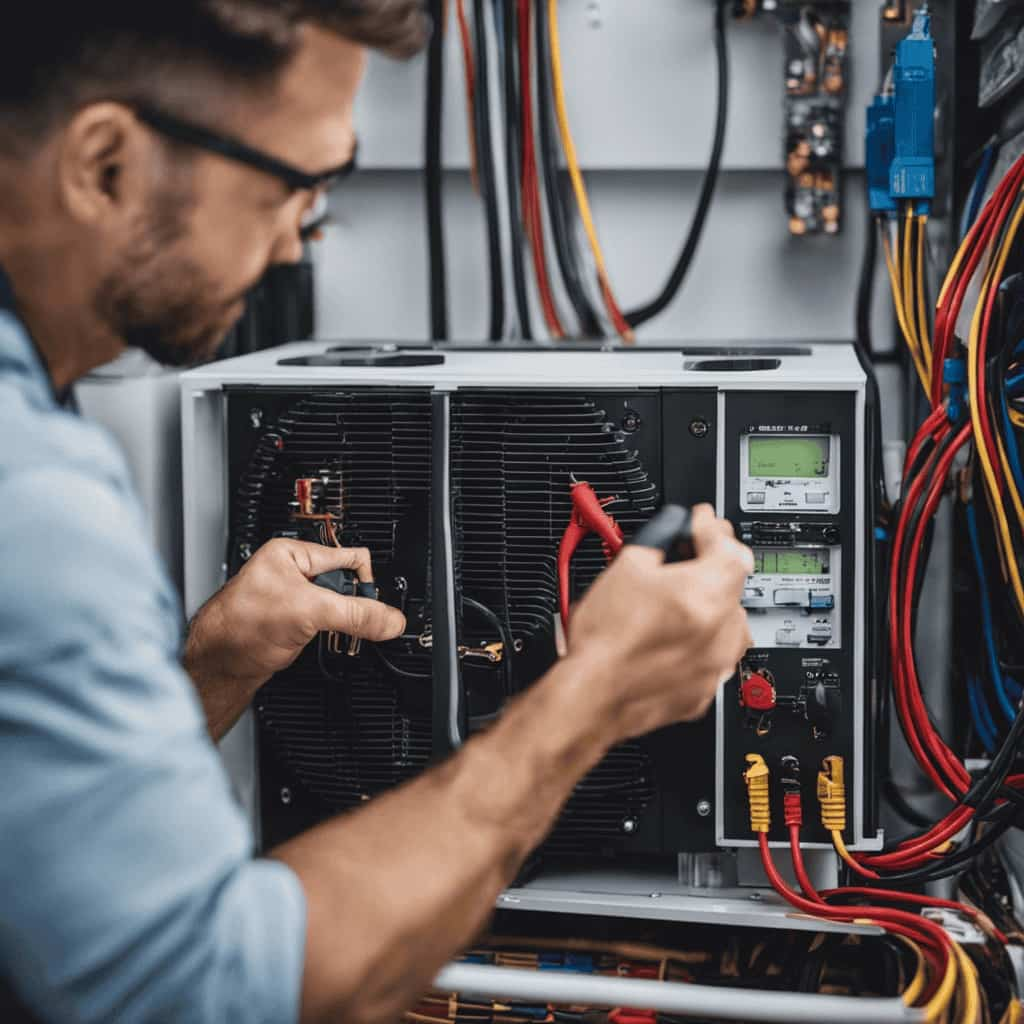Imagine a world where harnessing thermal energy enables us to control our surroundings to our exact liking. Our in-depth guide on thermal energy and refrigerant heat pumps explores the intricacies of these remarkable systems.
From understanding the role of refrigerants to maximizing efficiency, we will equip you with the knowledge to make the most of your heat pump.
Join us on this journey as we dive into the world of thermal energy transfer and refrigerant-based systems.
Key Takeaways
- Efficient heat transfer is crucial for optimizing heat pump performance.
- Refrigerants are essential for heat pump operation and facilitate the transfer of thermal energy.
- Traditional refrigerants like CFCs and HCFCs contribute to ozone depletion and global warming.
- Exploring alternative refrigerant options is crucial for reducing environmental impact and maximizing efficiency.
The Basics of Thermal Energy Transfer in Heat Pumps
Let’s start by breaking down the basics of how thermal energy is transferred in heat pumps.
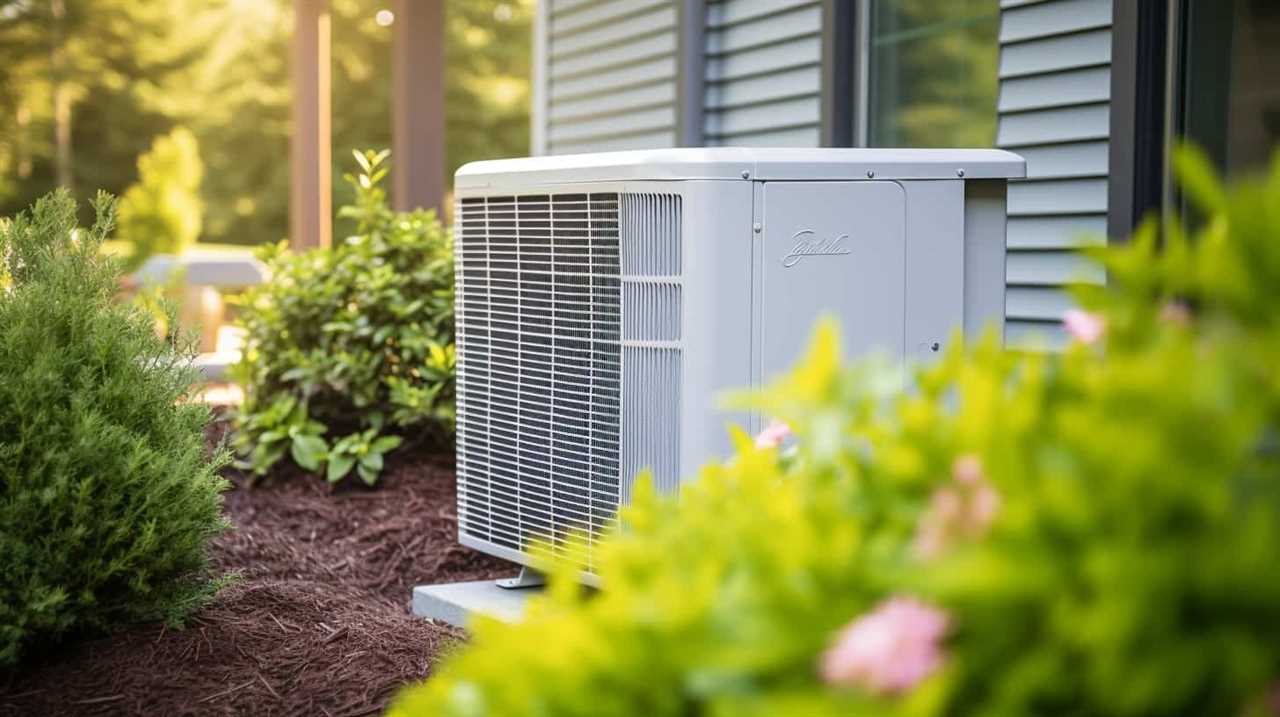
In a heat pump system, efficient heat transfer is crucial for optimizing performance. The primary method used in heat pumps for transferring thermal energy is through the refrigerant. The refrigerant plays a vital role in the heat transfer process, absorbing heat from a low-temperature source and releasing it to a higher-temperature sink.
This transfer of energy is achieved through a cycle of evaporation and condensation. As the refrigerant evaporates, it absorbs heat from the source, and when it condenses, it releases heat to the sink.
This continuous cycle allows the heat pump to efficiently transfer thermal energy, ensuring optimal performance in providing heating or cooling solutions.
Understanding the Role of Refrigerants in Heat Pump Systems
When it comes to heat pump systems, refrigerants play a crucial role in their operation. Understanding the importance of refrigerants is essential in maximizing the efficiency and performance of these systems.

Additionally, it’s vital to consider the environmental impact of refrigerants, as some traditional options have been found to contribute to ozone depletion and global warming. Exploring alternatives to traditional refrigerants can help mitigate these environmental concerns and promote more sustainable heat pump systems.
Importance of Refrigerants
Refrigerants play a crucial role in heat pump systems by facilitating the transfer of thermal energy. These substances are responsible for absorbing heat from one location and releasing it in another, making it possible for heat pumps to provide both heating and cooling functions. The importance of refrigerants lies in their ability to efficiently transfer thermal energy, allowing heat pump systems to effectively regulate indoor temperatures.
However, it’s also important to consider the environmental impact of refrigerants. Some refrigerants, such as chlorofluorocarbons (CFCs) and hydrochlorofluorocarbons (HCFCs), have been found to contribute to ozone depletion and global warming. As a result, regulations have been put in place to phase out the use of these harmful substances.
In recent years, there’s been a shift towards the use of more environmentally-friendly refrigerants, such as hydrofluorocarbons (HFCs) and natural refrigerants like carbon dioxide and ammonia.

Understanding the importance of refrigerants and their environmental impact is crucial for both the efficient operation of heat pump systems and the preservation of our environment.
Environmental Impact of Refrigerants
We need to consider the environmental impact of refrigerants in order to understand their role in heat pump systems. Refrigerants play a crucial role in heat pumps by absorbing and releasing heat, allowing for efficient heating and cooling.
However, certain types of refrigerants can have negative effects on the environment. One such impact is their contribution to the depletion of the ozone layer. Chlorofluorocarbons (CFCs) and hydrochlorofluorocarbons (HCFCs), which were commonly used in the past, have been found to be major contributors to ozone depletion.
Additionally, refrigerants can also contribute to greenhouse gas emissions. Hydrofluorocarbons (HFCs), which are commonly used as replacements for CFCs and HCFCs, have a high global warming potential.

As a result, there’s a growing need to transition to more environmentally friendly refrigerants with lower ozone depletion and global warming potentials.
Alternatives to Traditional Refrigerants
To explore alternatives to traditional refrigerants, let’s examine the role of refrigerants in heat pump systems. Refrigerants play a crucial role in heat pump systems by transferring heat from one place to another. They absorb heat from the source and release it at the desired location. However, traditional refrigerants such as hydrochlorofluorocarbons (HCFCs) and chlorofluorocarbons (CFCs) have been found to have a detrimental impact on the environment. Therefore, finding alternative refrigerant options is essential to reduce the environmental considerations.
Here is a table summarizing some alternative refrigerant options and their environmental considerations:
| Alternative Refrigerant | Environmental Considerations |
|---|---|
| Hydrofluorocarbons (HFCs) | High Global Warming Potential (GWP) |
| Hydrofluoroolefins (HFOs) | Lower GWP compared to HFCs |
| Carbon dioxide (CO2) | Natural and non-toxic, but requires high pressure |
How Thermal Energy Is Extracted From the Surrounding Environment
When it comes to extracting thermal energy from the surrounding environment, there are efficient methods that we can utilize. These methods involve utilizing heat exchangers and refrigerant fluids to transfer heat from a colder source to a warmer one.

However, it’s important to consider the environmental impact of this extraction process, as certain refrigerants can contribute to global warming and ozone depletion.
Efficient Heat Extraction Methods
One of the most efficient ways to extract thermal energy from the surrounding environment is through the use of a refrigerant heat pump. This technology utilizes efficient cooling methods to transfer heat from a low-temperature source, such as the air or ground, to a high-temperature reservoir.
By leveraging the principles of thermodynamics, the refrigerant heat pump can extract heat even from air or water that’s colder than the desired temperature for heating purposes. This makes it an ideal solution for renewable energy integration, as it can efficiently harness thermal energy from the environment to provide heating and hot water for residential and commercial buildings.
With its ability to optimize energy usage and reduce carbon emissions, the refrigerant heat pump is a prime example of a sustainable and efficient heat extraction method.
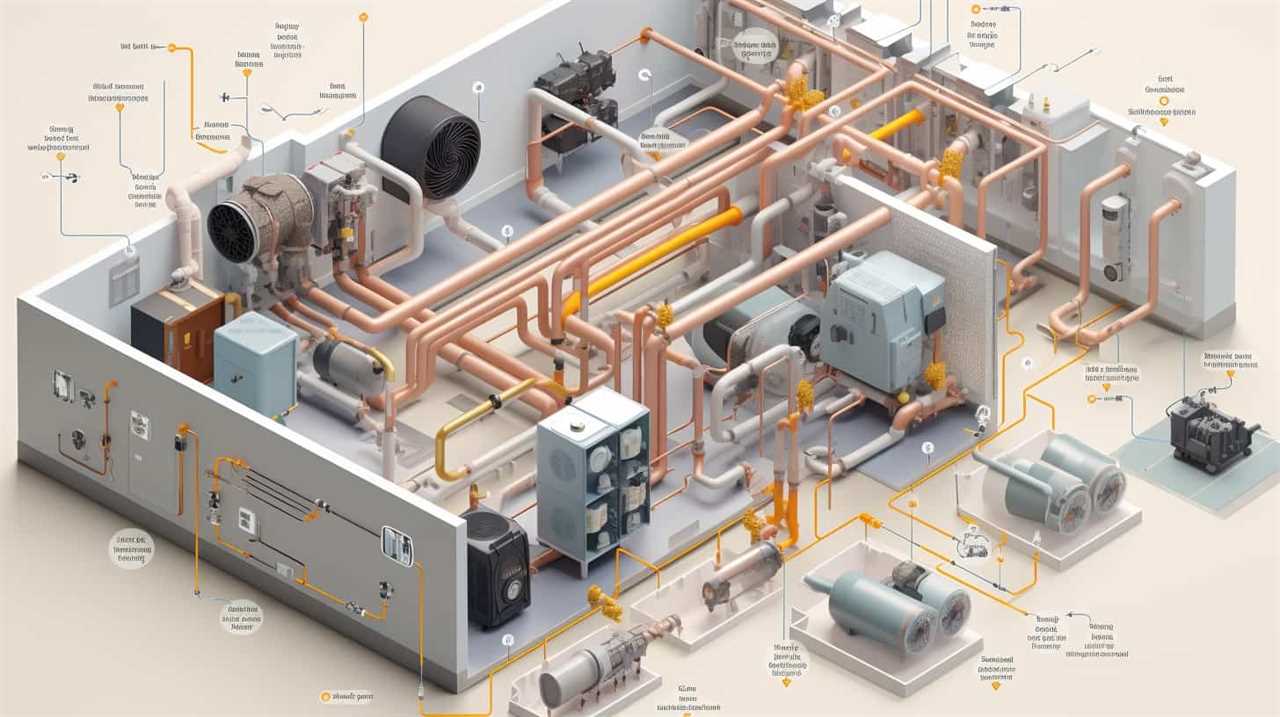
Environmental Impact of Extraction
We must consider the environmental impact of extracting thermal energy from the surrounding environment. The extraction techniques used can have significant ecological consequences. Here are three important factors to consider:
-
Habitat disruption: Some extraction techniques, such as geothermal energy, require drilling deep into the Earth’s crust. This can disrupt delicate ecosystems and disturb the natural habitat of plants and animals.
-
Water usage: Certain extraction methods, like water-source heat pumps, require large amounts of water for their operation. This can put a strain on local water supplies, especially in areas already experiencing water scarcity.
-
Emissions: Depending on the energy source used for extraction, there can be emissions of greenhouse gases and other pollutants. It’s important to assess the overall carbon footprint and environmental impact of the chosen extraction technique.
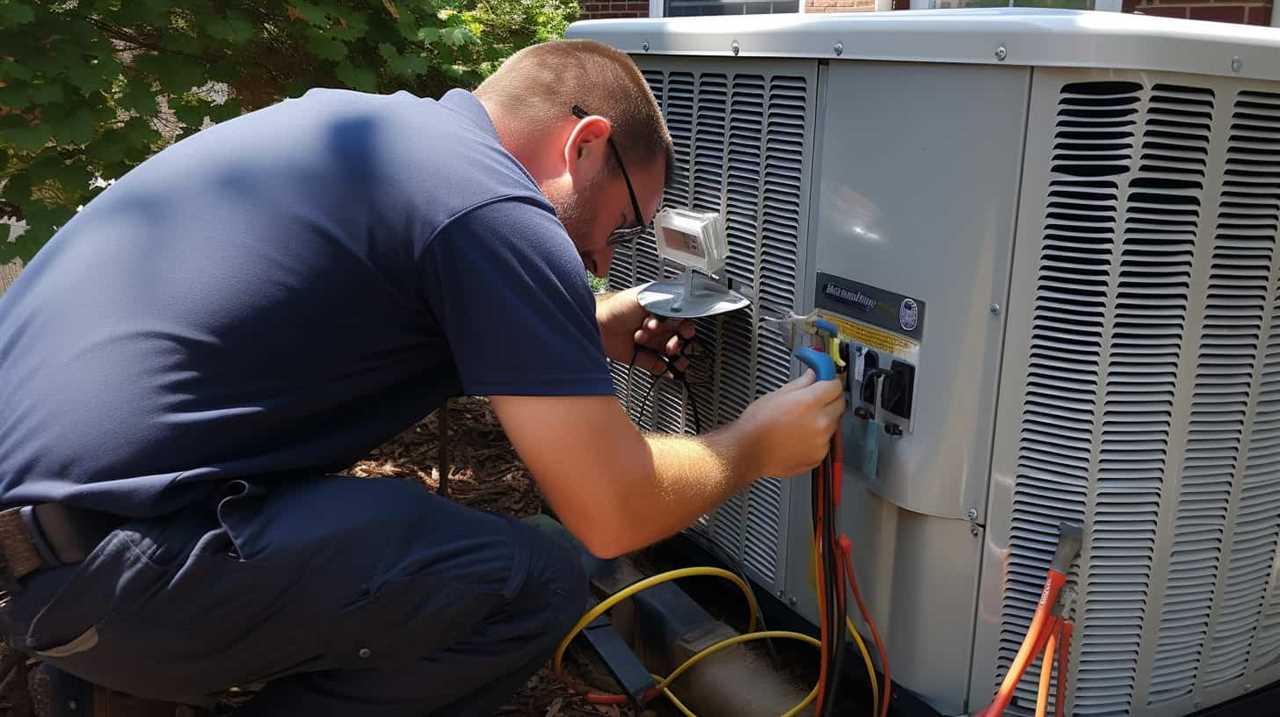
Considering these factors is crucial to minimize the negative environmental impact and promote sustainable energy practices.
Now, let’s explore the process of heat absorption and release in heat pumps.
The Process of Heat Absorption and Release in Heat Pumps
Our guide will now delve into the process of how heat pumps absorb and release heat. Heat pumps operate by utilizing the principles of thermodynamics to transfer heat from a low-temperature source to a high-temperature sink. This process is made possible by the use of refrigerants, which undergo a cycle of evaporation and condensation. When the refrigerant is in its gaseous state, it absorbs heat from the surrounding environment, causing it to evaporate. This heat absorption occurs in the evaporator coil. The refrigerant then travels to the compressor, where it is compressed, increasing its temperature and pressure. From there, it moves to the condenser coil, where it releases heat to the outside environment by condensing back into a liquid state. This continuous cycle of heat absorption and release allows the heat pump to efficiently transfer heat and provide heating or cooling to a space.
| Process Step | Description |
|---|---|
| Evaporation | Refrigerant absorbs heat from the environment and evaporates in the evaporator coil. |
| Compression | Compressed by the compressor, raising the temperature and pressure of the refrigerant. |
| Condensation | Refrigerant releases heat to the outside environment and condenses back into a liquid state in the condenser coil. |
| Expansion | Refrigerant expands in the expansion valve, decreasing its temperature and pressure to prepare for the evaporation process. |
Understanding the process of heat absorption and release in heat pumps is crucial for maximizing heat pump efficiency and ensuring optimal heat pump operation. By efficiently transferring heat, heat pumps can provide comfortable living conditions while minimizing energy consumption, making them an environmentally friendly option for heating and cooling.

Maximizing Efficiency: Heat Transfer in Refrigerant-Based Systems
To maximize efficiency, we need to understand how heat is transferred in refrigerant-based systems. Heat transfer optimization plays a crucial role in achieving energy efficiency improvements. Here are three important factors to consider:
-
Proper refrigerant selection:
Choosing the right refrigerant with optimal thermodynamic properties is essential for efficient heat transfer. Factors such as heat capacity, boiling point, and thermal conductivity should be taken into account. -
Heat exchanger design:
The design of heat exchangers, including evaporators and condensers, plays a significant role in heat transfer efficiency. Factors such as surface area, flow rate, and tube diameter should be optimized to maximize heat transfer. -
Refrigerant flow management:
Proper flow management of the refrigerant within the system can greatly impact heat transfer efficiency. This includes optimizing flow rates, pressure drops, and minimizing resistance.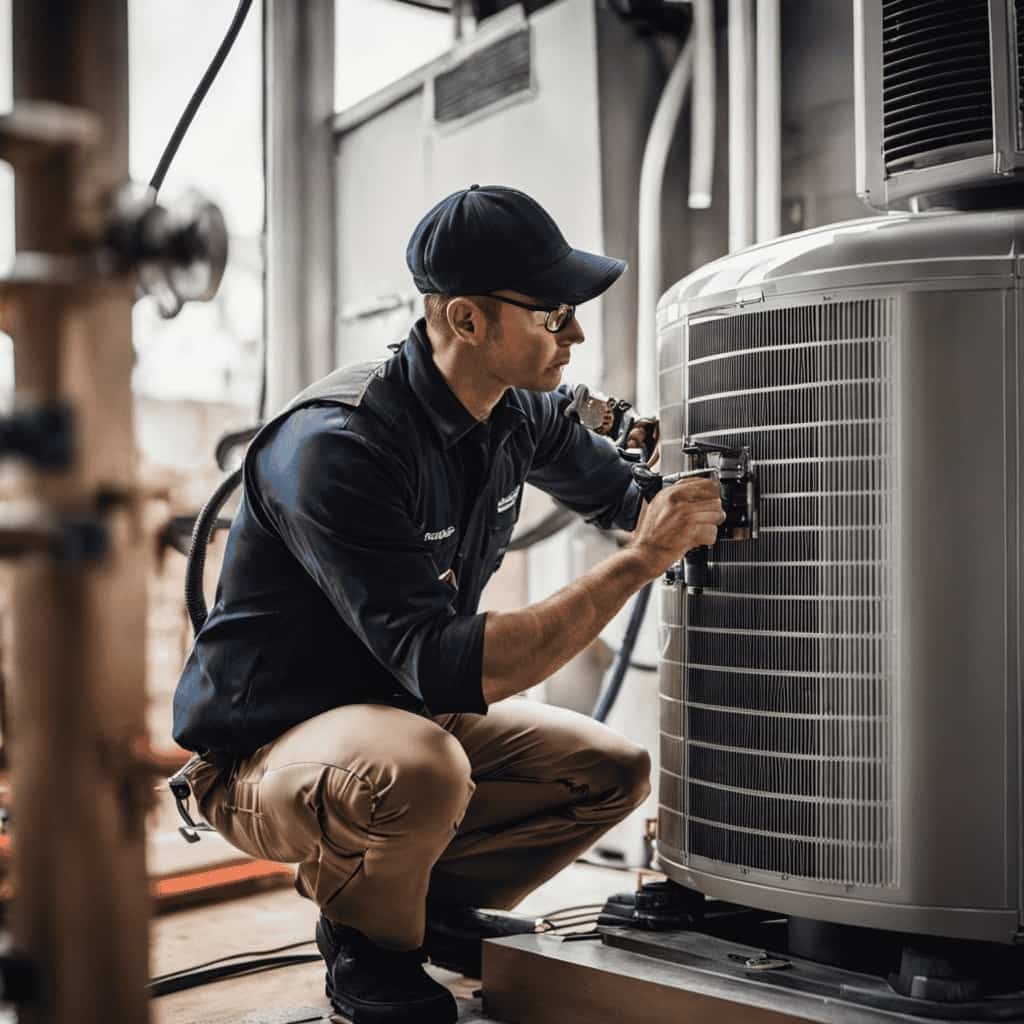
Key Components for Effective Thermal Energy Transfer in Heat Pumps
For optimal thermal energy transfer in heat pumps, it is crucial to have efficient key components and a well-designed system. One of the key components is the heat exchanger, which plays a vital role in transferring heat between different mediums. It maximizes efficiency by increasing the surface area for heat transfer and minimizing pressure drop. Another important component is the compressor, which compresses the refrigerant and increases its temperature and pressure. A highly efficient compressor is essential for optimizing performance. Additionally, the expansion valve regulates the flow of refrigerant, allowing it to expand and cool down before entering the evaporator. This component helps maintain efficient heat transfer by controlling the refrigerant flow rate. By ensuring the efficiency of these key components, heat pumps can achieve effective thermal energy transfer and provide optimal performance.
| Key Component | Function | Importance |
|---|---|---|
| Heat Exchanger | Transfers heat between mediums | Crucial for efficient heat transfer |
| Compressor | Increases refrigerant temperature and pressure | Essential for optimizing performance |
| Expansion Valve | Regulates refrigerant flow and temperature | Maintains efficient heat transfer |
Common Challenges and Solutions in Thermal Energy Transfer
We face various challenges in heat transfer, but by implementing innovative solutions, we can overcome them and achieve efficient thermal energy transfer.
Here are three common challenges in heat transfer and the corresponding innovative solutions:
-
Thermal resistance: Heat transfer can be hindered by materials with high thermal resistance. To overcome this challenge, we can use materials with low thermal resistance or enhance heat transfer through improved design and surface treatments.

-
Heat loss: Heat can be lost during transfer, reducing overall efficiency. Insulation and sealing techniques can minimize heat loss, ensuring that the transferred energy reaches its intended destination.
-
Fouling and scaling: Over time, deposits can accumulate on heat transfer surfaces, decreasing their effectiveness. Regular maintenance, including cleaning and chemical treatments, can prevent fouling and scaling, ensuring optimal heat transfer efficiency.
Factors Affecting the Performance of Refrigerant Heat Pumps
What factors affect the performance of refrigerant heat pumps? When it comes to the performance of refrigerant heat pumps, there are several key factors that can have an impact. These factors include the temperature difference between the heat source and the heat sink, the type and quality of the refrigerant used, the efficiency of the compressor, the design and layout of the heat exchangers, and the overall system maintenance. To help visualize the significance of these factors, let’s take a look at the table below:
| Factor | Impact on Performance |
|---|---|
| Temperature difference | Higher difference = higher performance |
| Refrigerant type and quality | Higher quality = better performance |
| Compressor efficiency | Higher efficiency = better performance |
| Heat exchanger design | Optimal design = improved performance |
| System maintenance | Regular maintenance = consistent performance |
Best Practices for Maintenance and Troubleshooting in Heat Pump Systems
To ensure optimal performance and address any issues that may arise, we regularly maintain and troubleshoot our heat pump systems using best practices. Here are some maintenance best practices and troubleshooting techniques that we follow:

-
Regularly clean and inspect the heat pump components: Dust and debris can accumulate on the evaporator and condenser coils, reducing their efficiency. We clean these coils regularly and also inspect other components like the fan, compressor, and refrigerant lines for any signs of wear or damage.
-
Check and replace air filters: Clogged air filters restrict airflow, reducing the heat pump’s efficiency. We check and replace air filters regularly to ensure proper airflow and maintain optimal performance.
-
Monitor and adjust refrigerant levels: Low refrigerant levels can impact the heat pump’s cooling and heating capacity. We regularly monitor the refrigerant levels and adjust them if needed to ensure efficient operation.
Frequently Asked Questions
How Does the Size of a Heat Pump Affect Its Efficiency?
When considering the size of a heat pump, there are several efficiency factors to take into account. Sizing considerations, such as the heat load and capacity, play a crucial role in determining the overall efficiency of the system.

What Is the Average Lifespan of a Refrigerant in a Heat Pump System?
The average lifespan of a refrigerant in a heat pump system depends on several factors, including maintenance requirements. However, with proper care and regular servicing, the typical lifespan can range from 10 to 15 years.
Can a Heat Pump Be Used for Both Heating and Cooling Purposes?
Yes, a heat pump can be used for both heating and cooling purposes. This is one of the many benefits of heat pump technology. It allows for efficient and versatile temperature control in a variety of environments.
What Are the Environmental Impacts of Using Refrigerants in Heat Pump Systems?
Negative effects of using refrigerants in heat pump systems include ozone depletion and contribution to global warming. Alternatives like natural refrigerants, such as carbon dioxide and ammonia, can help mitigate these environmental impacts.
How Can I Determine the Appropriate Size and Capacity of a Heat Pump for My Home or Building?
Determining the appropriate size and capacity of a heat pump for your home or building can be challenging. However, with proper estimation techniques and careful consideration of factors like insulation and climate, it is possible to find the right fit.
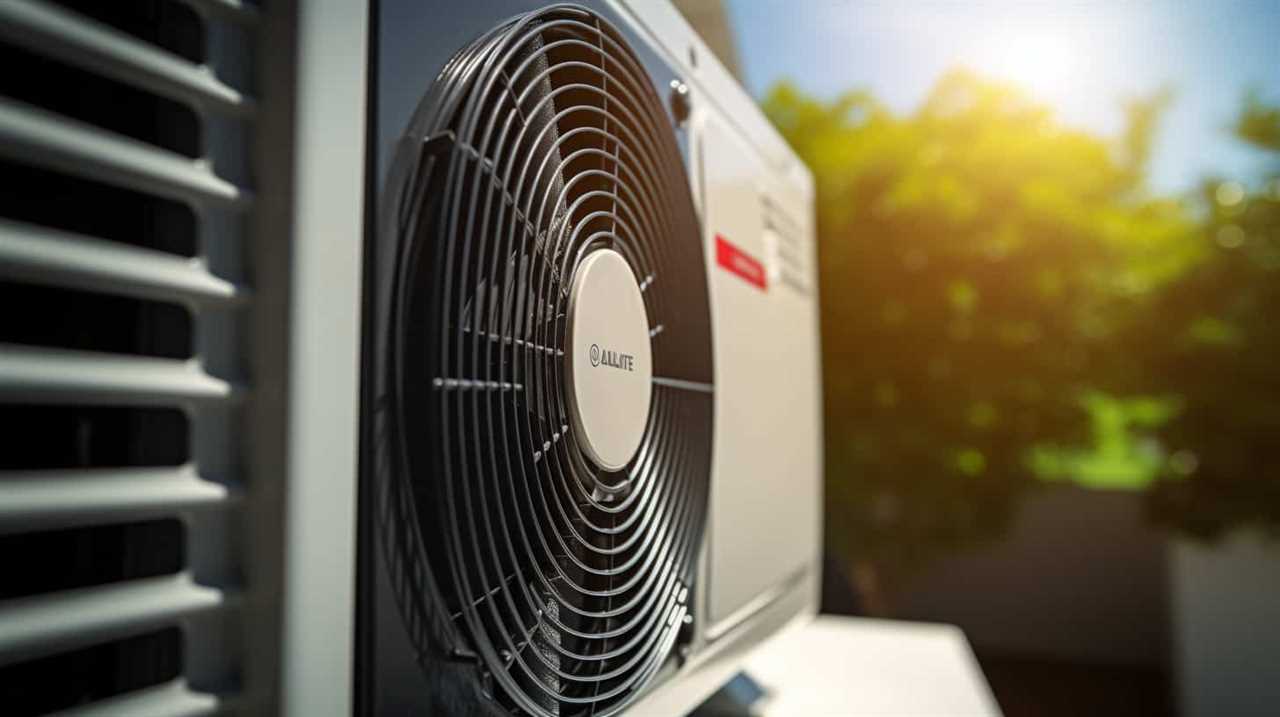
Conclusion
In conclusion, understanding the principles of thermal energy transfer and the role of refrigerants in heat pump systems is essential for maximizing efficiency and maintaining optimal performance.
By carefully considering key components, addressing common challenges, and implementing best practices for maintenance and troubleshooting, heat pump systems can effectively extract thermal energy from the surrounding environment.
Through these efforts, we can ensure the smooth operation of refrigerant heat pumps, providing efficient heating and cooling solutions for a variety of applications.

